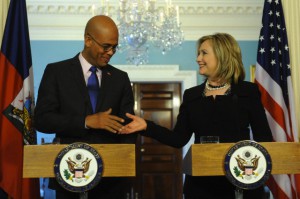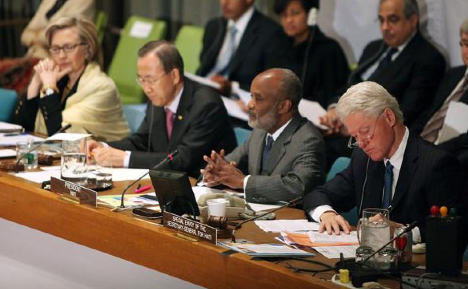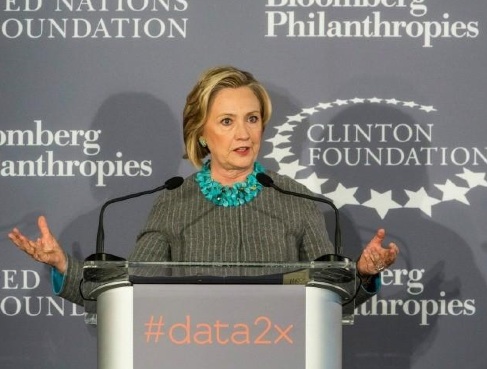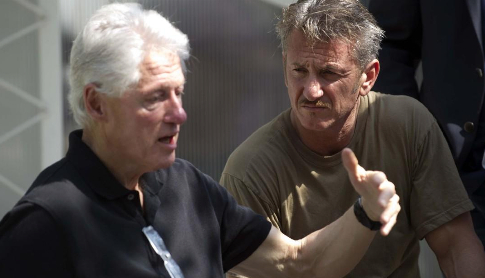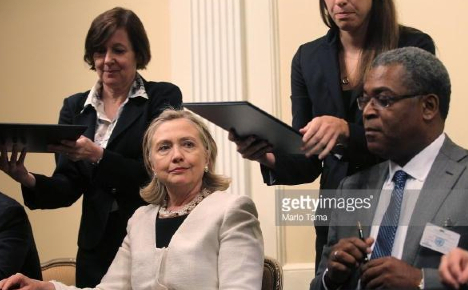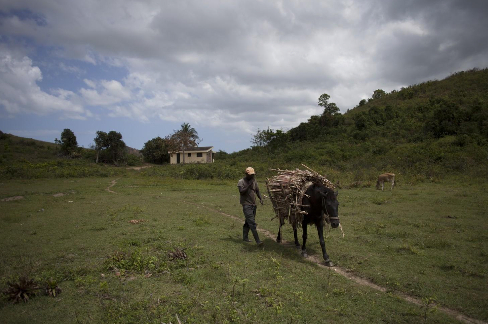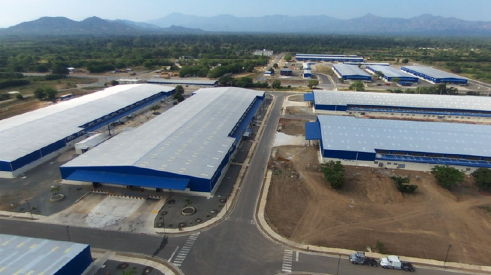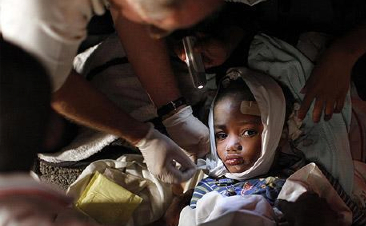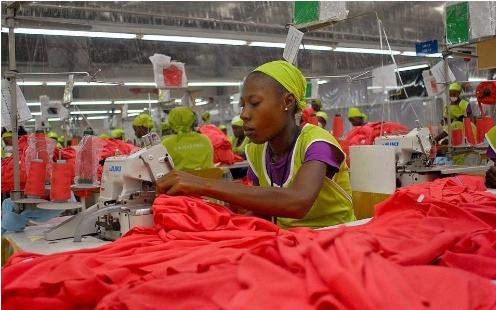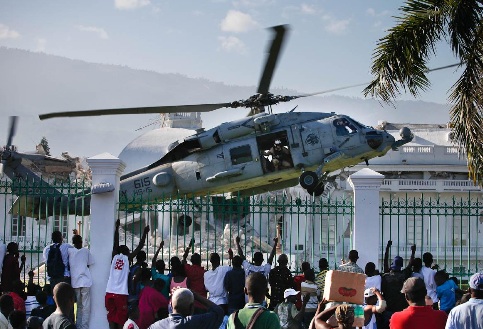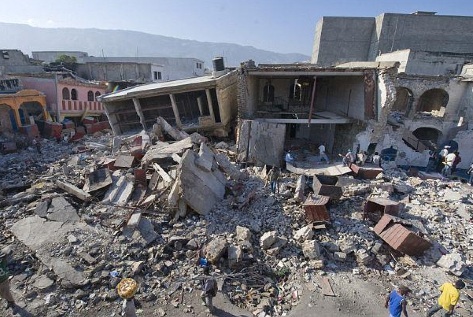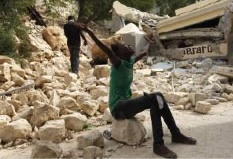When Bill and Hillary Clinton married in 1975, a friend gave them a trip to Haiti for their honeymoon. The Washington Post reported , “Since that honeymoon vacation, the Caribbean island nation has held a life-long allure for the couple, a place they found at once desperate and enchanting, pulling at their emotions throughout his presidency and in her maiden year as secretary of state.” Haiti’s president at the time was Jean-Claude (Baby Doc) Duvalier, and Hillary and Bill fell in love with a country living under a dictator and his tonton macoute death squad.
Bill Clinton helped found the Democratic Leadership Council in 1985, formed as a counservative counter to Jesse Jackson’s Rainbow Coalition campaign of 1984, which more pro-business Democrats saw as a threat. Running as a “New Democrat,” Cinton became president in 1992 after 12 years of “Reaganomics,” philosophically part of the global economic movement called “neo-liberalism,” a policy of privatization and free trade that was transforming the global economy.
Instead of trying to brake or reverse Reaganomics, Clinton vigorously pursued Reagan/Bush policies, aligning with Republicans to push US participation in both NAFTA and the World Trade Organization (WTO) through a resistant Democrat-controlled Congress. He also signed the Republican-sponsored bill to overturn the Glass-Steagall Act of 1933, which had separated commercial banking from investment banking. The destruction of that firewall fueled the Wall Street gambling-created economic bubble that burst in the housing mortgage crisis of 2008-2009.
Clinton finally had to confront some of the consequences of his actions. “We made a devil’s bargain” Clinton apologized at a hearing before the Senate Foreign Relations Committee in 2010. He apologized for forcing Haiti to drop tariffs on imported US rice, subsidized by our government, during his time in office. Neo-liberal policy prevented Haiti’s government from subsidizing its own rice farmers, and they could not compete, wiping out Haitian rice farming and seriously damaging Haiti’s ability to be self-sufficient.
Clinton testified, “Since 1981, the United States has followed a policy, until the last year or so when we started rethinking it, that we rich countries that produce a lot of food should sell it to poor countries and relieve them of the burden of producing their own food, so, thank goodness, they can leap directly into the industrial era. It has not worked. It may have been good for some of my farmers in Arkansas, but it has not worked. It was a mistake. . . I have to live every day with the consequences of the lost capacity to produce a rice crop in Haiti to feed those people, because of what I did. Nobody else.”
What he did not explain is that after Haitians stop producing rice to feed themselves, under neo-liberal gospel, they’re supposed to instead produce mangos and other tropical foods to export to northern countries. Thus they become dependent on cut throat global markets to earn the hard currency foreign exchange necessary to buy imported food, which can now be sold at monopoly prices because there is no domestic competition.
By the time Jean-Bertrand Aristide returned to office in 1994 after the first coup against him in 1990, “Miami rice” had already flooded Haiti’s markets. However the Aristide government resisted enormous pressure to privatize other Haitian government-owned businesses, and Clinton made sure Aristide would not serve the full 5 year term to which he was elected, despite demands from the majority of Haitians who wanted Aristide to complete 5 full years in office, making up for the almost 4 years spent in exile after the coup.
As a result of the destruction of the rice crop, Haitian farmers and their families who could no longer afford to farm flooded into Port-au-Prince, Haiti’s capital, to look for work. Many of them were among the hundreds of thousands of dead and injured in the catastrophic earthquake of January 12, 2010.
Eight days after the quake, Bill Clinton continued in the Post interview, “This is a personal thing for us.” Hillary and I have “always felt a special responsibility” for Haiti and its 9 million people. “She has the same memories I do. She has the same concerns I do. We love the place.” The earthquake destruction “personally emotionally affected” him. His wife, he said, became “physically sick.”
The global community responded with incredible generosity after the quake, donating or pledging almost $10 billion . The Red Cross raised $488 million, World Vision $265.3 million (by 2015), Catholic Relief $159 million, Partners in Health more than $81 million, the Clinton Bush fund $52.6 million , the Clinton Foundation $36 million, and on and on. 180 charities raised money in the name of Haiti earthquake relief, yet Haiti remains as poor as ever, with the poverty rate in 2012 at 58.5 percent, and in rural areas at 74.9 percent.
In Where the relief money did and did not go: Haiti after the Quake , Bill Quigley and Amber Ramanauskas note, “The largest single recipient of US earthquake money was the US government. The same holds true for donations by other countries. Right after the earthquake, the US allocated $379 million in aid and sent in 5000 troops. The Associated Press discovered that of the $379 million in initial US money promised for Haiti, most was not really money going directly, or in some cases even indirectly, to Haiti. They documented in January 2010 that thirty three cents of each of these US dollars for Haiti was actually given directly back to the US to reimburse ourselves for sending in our military. Forty two cents of each dollar went to private and public non-governmental organizations like Save the Children, the UN World Food Program and the Pan American Health Organization. Hardly any went directly to Haitians or their government.
“The overall $1.6 billion allocated for relief by the US was spent much the same way according to an August 2010 report by the US Congressional Research Office” – reimbursed to the Department of Defense, the Department of Health and Human Services, to USAID disaster assistance; to the US Department of Agriculture, the Department of Homeland Security, and so on. International assistance followed the same pattern. After the earthquake, the U.S. ambassador to Haiti wrote wrote an email saying “The gold rush is on,” and indeed it was. For everyone but Haitians.
Instead of building infrastructure and providing aid to those most in need, Haiti’s international rulers continue their same old neo-liberal formula of promoting tourism, sweatshops , natural resource extraction, and cash crop exports. As Secretary of State, Hillary Clinton promoted this very policy, demonstrated particularly in the imposition of Michel Martelly as president. In January, 2011, at the height of the Egyptian Arab Spring revolution, Clinton flew to Port-au-Prince to demand that Martelly be named one of the two runoff candidates, although he was not announced originally by the Electoral Council as one of the two top vote getters.
Despite a voter boycott, with fewer than 20% of the electorate voting, Martelly was announced the winner of the “runoff,” and the results accepted by the international community. The results have been catastrophic for the Haitian majority, as Martelly appointed Duvalierists throughout his administration and has sanctioned privatization, repression, death squads, corruption, illegally appointed judges, and illegal changes to the constitution, while bringing a particularly greedy and arrogant entourage into his government. His administration has granted mineral concessions with no accountability, and cut down the only forest on the island of Ile a Vache, displacing hundreds of peasant families, to build a tourist resort.
“At least seven hotels are under construction or are in the planning stage in Port-au-Prince and its surrounding areas, raising hopes that thousands of investors will soon fill their air-conditioned rooms looking to build factories and tourist infrastructure that will help Haiti bounce back from a 2010 earthquake . . .” The Clinton Bush fund invested $2 million of earthquake money in the new luxury Royal Oasis Hotel.
The Clinton Foundation invested earthquake money in the Caracol Northern Industrial Park , with Korean apparel/sweatshop manufacturer Sae-A Trading Co. Ltd. the anchor tenant, which makes clothes for Walmart, Gap, and other retailers. The earthquake did not touch this part of Haiti. Projected to provide 65,000 jobs, as of September, 2014 only 4,165 people worked there. At the Opening Ceremony, Secretary of State Clinton said, “I want to begin by thanking President Martelly for his leadership and his vision and his passion about the people of his country and for your administration’s commitment to show the world Haiti is open for business.”
In June, 2015 Pro Publica and NPR published an analysis of the Red Cross called “How the Red Cross raised half a billion dollars for Haiti and built 6 homes.” “The Red Cross says it has provided homes to more than 130,000 people. But the actual number of permanent homes the group has built in all of Haiti: six. . . After the earthquake, Red Cross CEO Gail McGovern unveiled ambitious plans to ‘develop brand-new communities.’ None has ever been built.” The donations however “helped the group erase its more-than $100 million deficit.”
NGOs
Haitians call neo-liberalism plan lanmó: the “death plan,” because of the social and economic devastation caused by neo-liberal policies – the forced opening of markets to U.S. goods, sweatshop wages, the plundering of natural resources, austerity budget programs, and the privatization of state owned enterprises.
This pattern is not new, so much as a continuation of the same policies used to rule over Haiti since the people’s successful 1804 revolution to overthrow slavery and drive out the French. The former slave owning countries, in particular France and the United States, have operated ever since to prevent any true democratic form of government that would benefit the majority of Haitians, and limit in any way US and French business interests.
The most recent development is rule through non-governmental organizations, or NGOs. In “Is Haiti Doomed to Be the Republic of NGOs?” , Vijaya Ramachandran writes, “One study found that even before the January 2010 earthquake, NGOs provided 70 percent of health care, and private schools (mostly NGO-run) accounted for 85 percent of national education.” “Humanitarian agencies, NGOs, private contractors, and other non-state service providers have received 99 percent of [earthquake] relief aid — less than 1 percent of aid in the immediate aftermath of the quake went to public institutions or to the government.”
NGOs first entered Haiti shortly after World War II, but became a flood in the 1980s, propelled by global neo-liberal economic ideology, changes in tax laws that allowed the mushrooming of foundations as tax dodge havens, and the desire to avert aid money away from the famously kleptocratic regime of Baby Doc Duvalier.
One goal of neo-liberalism is to starve governments of the money necessary to provide social services, so those services, like education, healthcare, water, and even prisons, become privatized. Public assets, theoretically available to all who need them, get sold to corporations, and then only those with money get served. Once governments can no longer fund services, NGOs leap in to try to do the job, but with a hitch.
A democratically elected government will work to serve the needs of the people that elected it, whereas NGOs fulfill the agendas of those who fund them, and are not necessarily accountable to the people they serve. While NGOs may seem benign, they actually help to destabilize social services, undermine governments, and ultimately increase poverty.
Since foundations and governments in the Global North are primary funders of the NGOs that operate in the Global South, the goals of NGOs may not be the same as the goals of governments – particularly in Haiti, where 67% of Haitian voters elected Jean-Bertrand Aristide president in 1990 with a mandate to develop institutions to support the majority of Haitians, instead of international investors.
Big NGOs operate as big businesses, with the same goals, methods, and views, but their “profits” come from the “alleviation” of people’s suffering. In other words, NGOs exist as a result of suffering and they need that suffering to thrive and persist. Each NGO has its own staff, its own office, own agenda, and own Haitian “partners.” They raise money in the name of Haiti, but they control that money, and they decide how to spend it, not Haitians. After the earthquake, not only did little money go to the Haitian government or institutions, many meetings about aid distribution excluded Haitians or were conducted in languages other than Haitian kreyol.
According to an internal Red Cross budgeting document for a housing project, “the project manager – a position reserved for an expatriate – was entitled to allowances for housing, food and other expenses, home leave trips, R&R four times a year, and relocation expenses. In all, it added up to $140,000. Compensation for a senior Haitian engineer — the top local position — was less than one-third of that, $42,000 a year.”
Plan Lanmó and Cholera
The cholera epidemic provides possibly the most explicit example of how Plan Lanmó is the “death plan.” Cholera was introduced into Haiti by the waste dumped into the Artibonite River of Nepalese soldiers serving in the U.N. MINUSTAH army, which has occupied Haiti since the U.S., Canada, and French-sponsored coup against democratically elected president Jean-Bertrand Aristide on February 29, 2004. Conservative estimates show that as of August 30, 2014 , 8,592 people had died from the disease and 706,089, 6% of the population, had been made sick, because of water contaminated by sewage. At first the UN denied its role in introducing cholera, then when a French scientist proved it, the UN refused to spend the necessary money to create or coordinate the creation of a sanitation system that would eliminate it.
The Pro Publica report says, “When a cholera epidemic raged through Haiti nine months after the quake, the biggest part of the Red Cross’ response — a plan to distribute soap and oral rehydration salts — was crippled by “internal issues that go unaddressed,” wrote the director of the Haiti program in her May 2011 mem
“Throughout that year, cholera was a steady killer. By September 2011, when the death toll had surpassed 6,000, the project was still listed as ‘very behind schedule’ according to another internal document.”
The Guardian reported on a 10 year plan to eradicate cholera, “According to Nigel Fisher, head of the UN mission in Haiti, funding is tight – the UN has committed only $23.5m on top of money it has already spent on cholera. This compares with the $650m the UN spends annually on the troops that brought the epidemic to Haiti.” It took 4 years after the introduction of cholera for the international community to hold a donor conference to raise funds for the cholera response. Of the $2.2 billion needed for an eradication program, only $50 million has been pledged.
So there you have it. When Haiti needs coordinated planning to create a massive infrastructure project, there is no entity capable of leading it. A competent government is the most obvious answer, but the Haitian government has been so neo-liberalized, privatized, defunded, imposed, and corrupted that it has neither the will nor the capacity to carry out such a task.
The UN occupation army created the catastrophe, but a US judge has ruled that the UN has legal immunity from any lawsuits by Haitians. There’s been no hearing of the case in Haitian courts.
The Red Cross distributes soap. Many governments, NGOs, and church organizations initiate programs, most well intentioned and staffed by well intentioned people, but their efforts are not coordinated, and none of them yet get to the root need – a modern sanitation system.
Almost all aid decisions are made – and the aid administered – by non-Haitians. When Haitians twice elected a government that actually worked to benefit the majority of its people, the US government and Haitian elites twice orchestrated coups to overthrow it, and the U.S. is the primary funder of a UN occupation army which suppresses those calling for its restoration.
This system of outside control of Haiti – replacing government with foreign aid, NGOs and consultants, has totally failed most Haitians. Finally, Martelly and the Electoral Council have called elections – August 9 for parliament and October 25 for president. Former President Aristide’s party, Fanmi Lavalas, will be running candidates for the first time since 2000. Repression and exclusion chicanery by forces allied with Martelly have already begun.
The Aug. 9 parliamentary elections have been widely denounced. Election day was marred by acts of voter suppression by Martelly’s PHTK party and two others affiliated with the Martelly-Paul government. Live radio interviews from many areas of Haiti reported violent acts by heavily armed individuals identified with PHTK against poll watchers and voters. These included the takeover and closure of polling stations, ballot stuffing and destruction of ballots already cast.
There were widespread reports of authorized poll watchers and voters denied access to polling stations while poll watchers from PHTK and allied parties were given free access. These are but the most recent of the repressive actions of the continuing 2004 coup d’état and occupation. It’s time for Haitians to be able to choose their own government and for the international community to respect and support their choice.
Charlie Hinton is a member of the Haiti Action Committee, www.haitisolidarity.net. He may be reached at lifewish@lmi.net.
